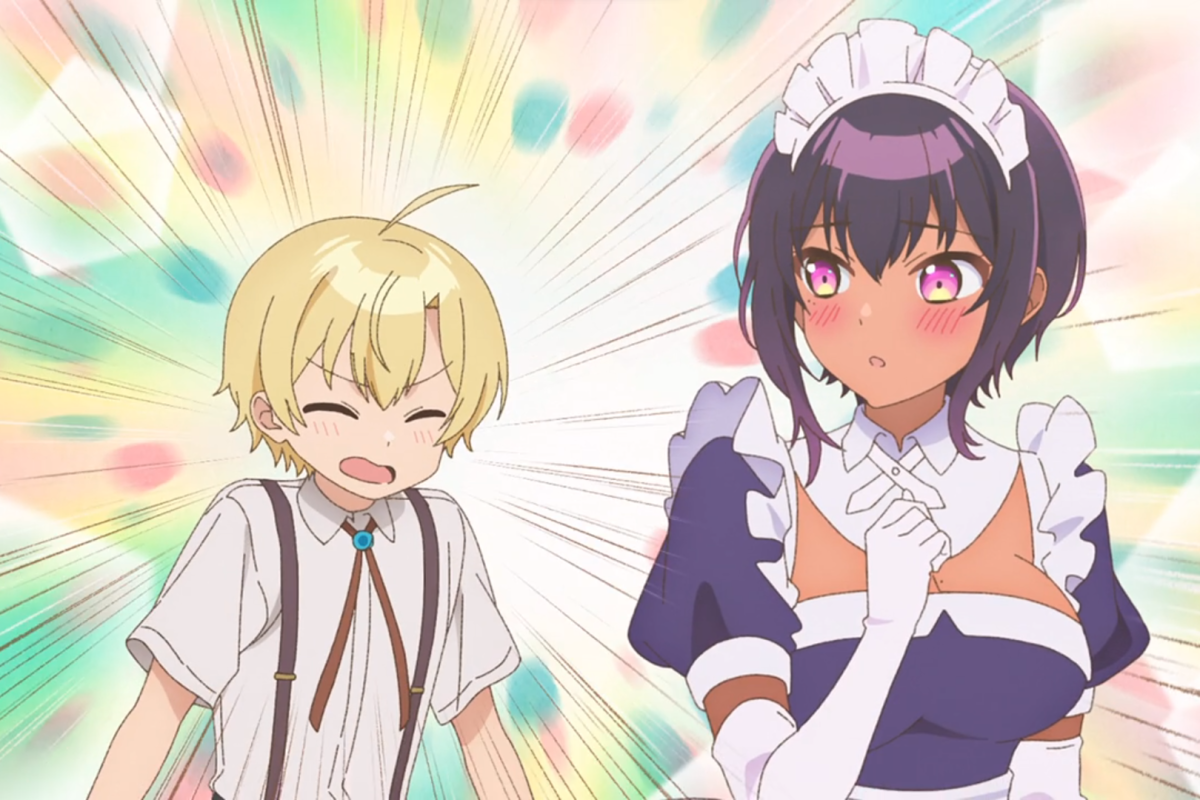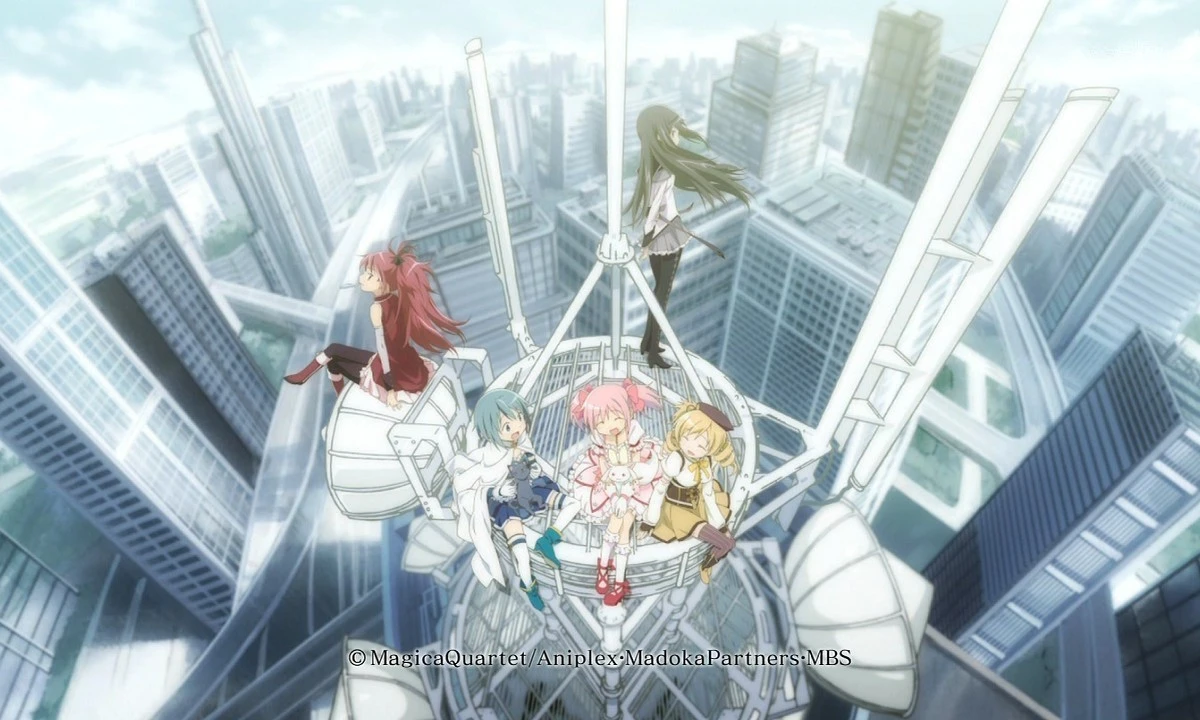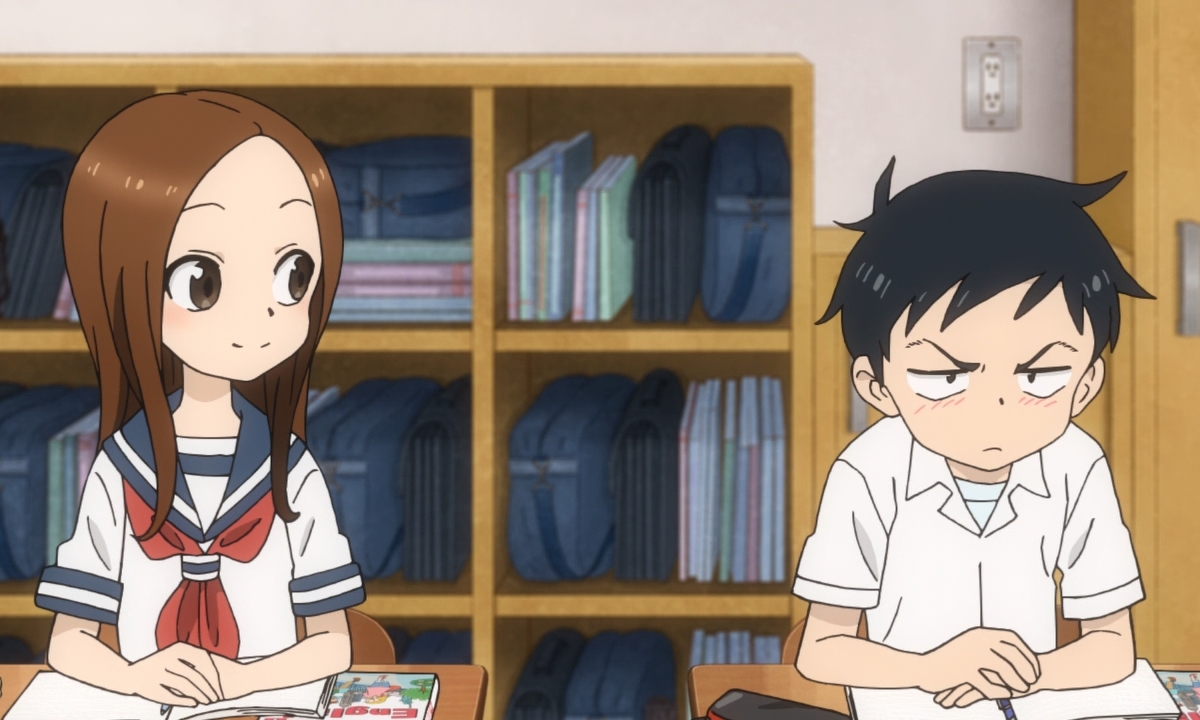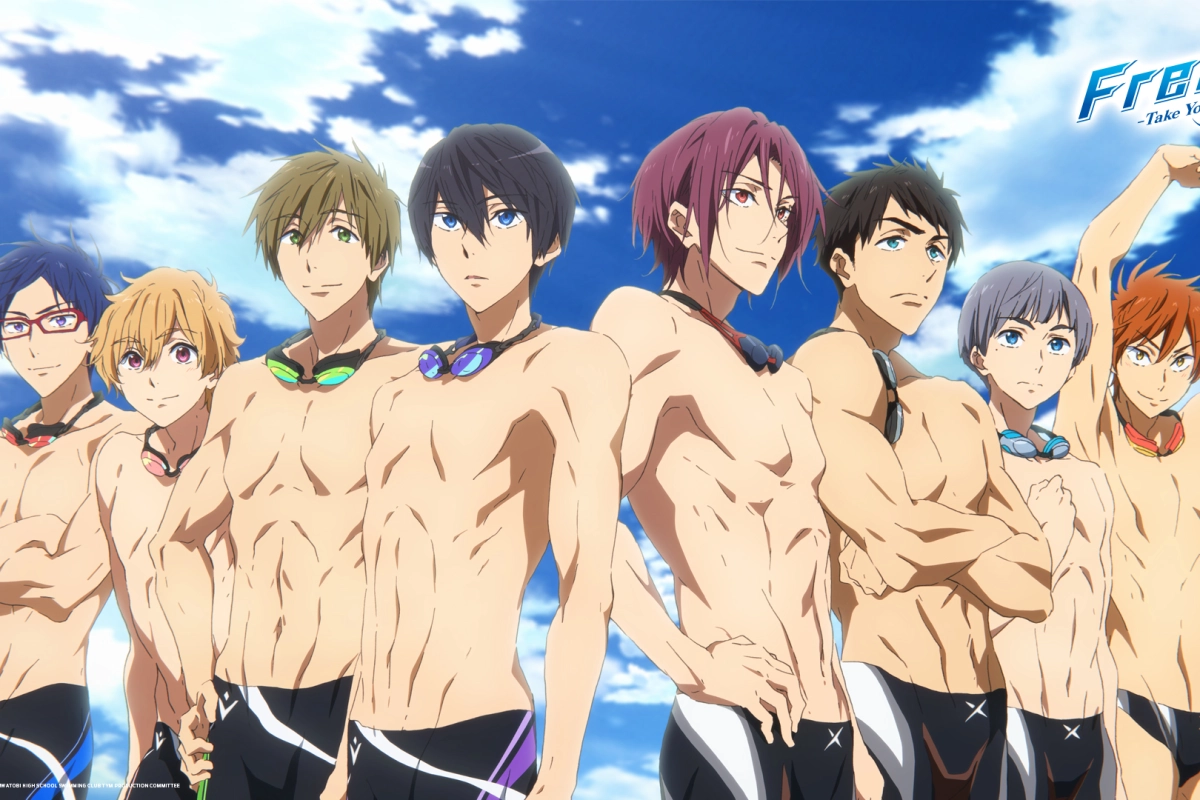Around the same time that I picked up anime again and started with Spy X Family, I decided I needed a few other shows on my plate to try, preferably not an action or stereotypical “shounen” type. I’m not super sure what ended up drawing me to this show though; it might’ve been the title, seeing an image of Lilith being cute, or it might’ve been a blog or post somewhere that caused me to turn this way. Either way, uhhh… well, you’ll see.
An Introduction
Yuuri (last name unknown) had a decent life in a small rustic mansion, nestled in the corner of a Japanese countryside… unfortunately, things would change when his parents suddenly passed away in a car accident. Rather than letting this keep him down though, he decided he would step up, inherit his parents’ mansion, and continue to live his normal life all on his own!
But maintaining a mansion, even a “small” mansion, is still hard work! And something he hasn’t done much of before. Yet another unexpected twist occurs when on one evening, he hears a knock on the front door. He opens it up, and a tall, beautiful woman with striking purple eyes is standing there, in a full traditional maid outfit. This woman, Lilith, asks Yuuri a simple request: if you let me stay in this mansion for you, can I be your maid?
Yuuri is hesitant, but he says yes… but there’s something mysterious about her…
The Plot and Characters
Stop me if you’ve heard this one before. So you have this maid that lives with you, right? You wake up in the middle of the night, you go down to the kitchen to get yourself a glass of water… and when you peek in, you see your maid reading from a book and messing with a pot on the stove. Hmm, you think to yourself… clearly, she’s trying to brew an insidious potion to put into my next meal! Only obvious explanation!
The show starts off with this recurring gag about how “suspicious” Yuuri finds his maid Lilith to be. Lilith may be a tad unorthodox in a number of ways, but so many of his accusations and suspicions are so off-base on their own (generally in the theme of her being a sorceress using spells/potions on him) or the events have simple explanations like her just being dedicated to her job. Things like how she keeps his clothes pristinely clean, how she prepares such delicious meals for him, and how she keeps the whole mansion clean. Especially in the first three episodes, we just see this done again and again. That’s not to say we don’t see anything else in these first three episodes, but most of the “comedy” is some form of this.
His accusations also turn into rambling explanations of how he finds her cute or attractive and that he misses her every moment that they’re separated. Either that, or he’ll drop a phrase that can be misconstrued as a sexual innuendo or a suggestion that he’s going to marry her. The unintentionally romantic leanings of his outbursts are clearly that: unintentional. He’s just blurting out whatever crosses his mind, and hasn’t actually considered other possible meanings of the words he just said. This is essentially our male lead, Yuuri: innocently blunt and also somewhat dense. If you imagine how brutally honest and blunt a little kid can be (purportedly; I don’t have any of my own) in the whole “kids say the darndest things” sense, that is Yuuri to a T – maybe even an over-exaggerated version of that.
To Yuuri’s credit, though, Lilith doesn’t make any of this easy for him. She literally appeared on his doorstep unannounced, begged him to accept her as his maid with no salary, and does her job with diligence and no complaints – this is indeed a tad suspicious. And the show does clearly hint at us about her having some “mysterious past” (which almost feels like a plot hook only here to try to keep you engaged), but beyond that, we don’t see much of a personality from her. Yuuri, by his own admission, doesn’t know much about her, but also any attempt he may have to try to learn more about her instead spirals into another wacky accusation.
We can tell she does get a tad annoyed about being accused of “suspicious” things (due to her being the narrator in episode 4) but his angrily tossed-out compliments on her appearance or his feelings for her causes her to become endlessly flustered and turning as red as a tomato. Thus, with the flustering and blushing, she never actually corrects him; in fact, she’ll occasionally jokingly go along with whatever accusation he set down, which sets him off even further with more sentences with unintended double meanings. That’s… all we really know about Lilith at this stage, 3 episodes in. She’s a hard worker, she’s easily flustered, she likes to do a bit of teasing, and she has some secrets about her past that she isn’t sharing – that’s it. It’s difficult for me to get invested in her character when she doesn’t really have much of a personality; that’s what’s mysterious about her: not her past, but her personality.
Thus far, the show just seems much more interested in doing light, repetitive comedy, rather than trying for anything deeper. As you might be able to tell, I found the joke tiring. On its own, I didn’t think the joke was particularly funny, but just repeating anything multiple times with little substantial variation will make anything tiring. However, it’s not like anything else happens in these first 3 episodes though.
Episode 2 introduces two cats… alright, I guess.
But episode 3 does actually have a bit more. Yuuri returns back to school for the first time since his parents’ passing; so now there’s the school setting and we meet his classmate Tsukasa Gojouin – she’s another young kid living in a mansion of her own with parents and a full staff of servants, including her own well-dressed maid named Fujisaki. However, we fall back into the same rut once Lilith gets reintroduced, and on top of that, Tsukasa overhears their exchanges and becomes smitten for their relationship, as she sees it akin to a romance novel playing out right in front of her. … So her and Fujisaki don’t exactly shake things up that much. Episode 3 also ends with a drawn-out sequence that was supposed to feel heartfelt but missed the mark, and instead just made it look like Lilith trying to comfort a whiny baby.
So yeah, at this point, I was about ready to drop the series. The joke I was seeing over and over was tiring, none of the characters were doing it for me, I was having issues with the show’s visuals (we’ll get to that), and… thinking about this logically: why are Yuuri and Lilith subjecting themselves to such a relationship? Lilith is being met with suspicion and doubt while trying to do her job, and this all seems like a waste of time for Yuuri. I questioned what appeal one would even see in this show.
However, the show starts to reinvent itself in the fourth episode.
The “Yuuri finding Lilith suspicious” thing was dialed down a lot, and instead formed the basis of exploring Yuuri’s actual thoughts and feelings about Lilith. We get actual character depth and development now. Episodes 4, 5, and 6 had proper emotional moments, where we got to see Yuuri and Lilith acting a bit more naturally and start to see a proper bond and connection with them, as well as delving deeper into the feelings and backstories of both of them. This was honestly quite wonderful to see, I enjoy seeing characters forming an actual bond on screen. This is the stuff that I was missing!
Episode 6 completed the transition, and the last 5 episodes (7 through 11) were just straight up, full-on romance anime.
It was nice to see Yuuri grow up and develop into a proper and more emotionally mature character, and seeing Lilith with a genuine smile was very nice. Also, it was good that they did more with Tsukasa than strictly keeping her to her shtick. The character development we got in the middle was all I needed to root for this main duo as the plot started moving. We, of course, got to see more of Lilith’s backstory, and enough things were answered or wrapped up decently well to finish the show with a satisfactory ending – not some “you gotta read the manga to find out what happens next” type of thing.
Needless to say, this was pretty surprising to me. This show pulled itself back from the edge of being dropped and forgotten, and now the final episode ends on a note that I had zero expectations of reaching after I watched episode 1. To be fair, it’s not like the final episodes were so completely different from the first ones that you couldn’t possibly expect them to be from the same series: the earlier episodes clearly had romantic undertones (although more done for laughs) and the later episodes still had some comedic moments – especially with the introduction of another character who surprisingly didn’t annoy me nearly as much as I thought she would.
The transition and slight shift from “romantic comedy” to “comedic romance”, with the added focus on character development, somewhat made the journey worth it… but doesn’t fully redeem this anime for me.
The first episodes were still unfunny and a slog to get through, and getting proper character depth and a bond between the main duo shouldn’t be “the reward” for getting through those episodes. We should’ve had more moments focusing on developing these characters, especially Lilith, well before they started toning down the comedy bit. Trying to tease Lilith’s “mysterious backstory” doesn’t give her a personality, and the final episodes had to rush a lot of development for her that could’ve been brought up sooner. The story that we finally end up with isn’t particularly unique or ground-breaking, either, with romance anime tropes to boot; in fact, I’d argue that it was maybe a bit over the top with some parts drawn out more than necessary and other parts (including Lilith’s backstory) not getting enough focus. (Thankfully, they didn’t end up going down the “misunderstanding” trope path, at least for any longer than they needed to make a quick joke and then move on.)
There’s also definitely questions here about what is really appropriate for the main duo’s relationship. We’re never explicitly told the age of Lilith or Yuuri – the Wikipedia article suggests they’re both under the age of 18, but Yuuri comes across as awfully young and Lilith as awfully… not under 18. Age thing aside, Lilith fills the roles of employee, parental figure, and romantic partner all in one for Yuuri. This isn’t a particularly healthy setup for either of them, especially Yuuri, but the anime seems more than okay about this. To be fair, this is far from the first show to tread this path.
Frankly, the tonal shift this show completed might be its only real claim to fame. If this was just a direct adaptation of the manga… part of me wonders if maybe the mangaka was just making some of this up as she went along (and if this wasn’t a direct adaptation… then just, why??). Such a tonal shift also has the potential to lose your audience. I personally am glad that this wasn’t just 11 episodes of that same comedy routine, but someone else might’ve come into this expecting to be just that (maybe similar to Master Teaser Takagi-san or Tanaka-kun is Always Listless)… and on the other hand, those looking for a more serious romantic plot would’ve looked over this show for being too comedic at first.
All of this leaves me in a kind of conflicted state. On one hand, this was a complete production with two characters that got a proper romance that other shows only hint at, presented through a story that doubled down on its characters rather than sticking to a cheap surface level joke for the whole run. On the other hand, the joke was a poor starting point that doesn’t gel with the more mature tone of the second half, and it glorifies a relationship whose appropriateness is questionable at best. And is the deeper character connections and proper development really something that should be doled out as a “reward”, rather than something the show had built in and executed beautifully from start to finish?
Ultimately, I did enjoy my time with this show, I’m happy with how it ended and I’m glad I stuck around to see that ending… but I don’t think I’ll ever watch this show again. And it’s debatable if I’d ever recommend it to someone else to watch.
Art, Animation, and Audio
The longer that I watched this show, the more annoyed I got with the visuals and animation. I realize not every production is going to be on the same level as Kyoto Animation, Studio Ghibli, or Trigger, but this feels below par – dare I say, a bit cheap at times.
It’s honestly a lot of smaller things. There’s heavy usage of panning shots or just still shots where the only movement is characters’ mouths, characters occasionally move in a way that looks more robotic and unnatural, and it sometimes feels like characters are just layered on top of the scene like a Photoshop image – rather than feeling like they’re actually in it.
Not even when you pause the anime and look at the still frames, are you safe from some slight jankiness. At least a few times each episode, there will be some shots where a characters’ eyes are placed a bit weirdly in comparison to each other or to the overall face – more often than not, that character is Yuuri. Also I invite you to pause the anime at any scene where you see Lilith and Yuuri walking down a hallway with windows – pause the video and just look at those windows, maybe even compare them to actual windows nearby you IRL. These windows look flat, don’t they? Almost as if they’re actually wallpapers that were plastered onto the wall to give the impression of windows. It’s surprisingly cheesy and bad looking (although I’d suppose that if you aren’t paying that close attention to the backgrounds and visuals, you might not notice right away).
Now, nothing here is that glaring that you’ll end up saying “wow, they really dropped the ball with this one”, but definitely a number of moments where I wondered if the animators were under a time crunch or if this was really the best they could do. No shots really appear that ambitious to me, in terms of framing or scene composition. Even if the quality did improve a bit towards the end, this still has to be considered below average, hasn’t it?
One major thing I do like though is the character designs. Lilith looks exceptionally pretty and cute with her round face, brilliant purple eyes, and a maid outfit that isn’t too complex and over designed. Yuuri usually sports a surprisingly involved outfit even when lounging at home, with a button-up shirt, suspenders on his shorts, and garter belts for his stockings. It looks and feels like something out of last century, which I suppose also fits in well enough with the traditional (if not antiquated) mansion; I do wonder if it would look a bit jarring if he roamed around in a baggy T-shirt and gym shorts while still in the same mansion.
I did actually wonder at first what time period this took place in, given that the mansion has such an older style and look and the main duo walks around in such outfits – but at the same time, they have a modern washing machine, Yuuri has a Nintendo Switch, and Lilith has a smart phone. As time goes on, you realize these two are the odd ones out; still, I don’t particularly get why Yuuri is dressed the way he is, even when just hanging about at home.
I’ll also note that aside from the impossibly thin windows and some weird line art stuff, I also find the backgrounds to be decently good. The warm, rich colors are nice and these artists are able to put together a pretty outdoor scene.
I feel the character designs and outdoor backgrounds do a lot of heavy lifting for this show visually, but again, there’s nothing outrageously egregious here. This isn’t unbearable, and indeed others might be better at overlooking these visual issues than I can. But still, I have to believe this is considered worse than average.
Okay, let’s move on to something else. How about the audio?
The soundtrack is a fairly standard combination of strings, woodwinds, and piano, used in a relatively light-hearted manner. However, there is the occasional track that introduces more of a drumset and adds a more industrial-ish sound to it that I do like – I call it the “Let’s do this!” theme. There’s a few other recurring themes I can recognize, but ultimately the soundtrack is forgettable. It isn’t a bother though, it serves its job well enough, and I also only tend to remember the soundtracks that aim to stand out on their own.
The opening song is strangely too highly energetic given what is shown in the opening animation. Minus a few panning shots, the animation is mainly Yuuri going about an average day, and the song has a very energetic drumbeat and multiple vocalists chanting the lyrics at points. It’s not too bad a song on its own – perhaps a tad generic – but it should’ve had a more energetic animation to match.
The ending theme is relatively cute, and the ending animation is also fairly tame and calm. There’s a bubble motif and a number of panning shots here too. It’s standard, but it’s all functional for an anime ending/credits roll.
I think Saori Hayami does a great job as the voice of Yuuri; it is interesting that this is also the same voice actress as Yor Forger from Spy x Family, given I often watched an episode of this after finishing an episode of that. Rie Takahashi does good as Lilith too, with good emotion, and I also have to shout-out Yui Horie for her performance of Tsukasa Gojouin.
Crunchyroll made an English dub for this anime as well – I guess this show was popular enough to warrant making one? After the initial hurdle of getting used to characters’ voices in another language, I think the dub is okay. Macy Anne Johnson does well enough as Yuuri, but I wish Natalie Van Sistine had a tad more emotion and energy in her performance as Lilith – at least more than the obvious outburst moments; some energy during the other parts too would’ve done better I think. All the other voice actors I think are pretty good, so overall the English side isn’t that bad; I personally would still prefer the Japanese side, but if you want to enjoy the show in English, the option is there and it’s not a real downgrade.
Final Remarks / TL;DR
The Maid I Recently Hired is Mysterious has the setup and appearance of being a single-gag show like Master Teaser Takagi-san was, with repeating the same joke and making slight romantic undertones… but the show turns into something else by reinventing itself halfway through into a full-on romance. It was nice to see Yuuri and his maid Lilith turn from shallow vessels for a tiring joke, into proper characters with feelings and bonds.
I would’ve dropped this show due to that repeating gag and lackluster visuals, had it not been for the tonal shift. But was putting up with the initial episodes worth it to get to the good stuff? I’d argue probably not. Maybe if you’re looking for a comedy show with a bit more meat on its bones, you could find enjoyment here, but I’d probably recommend most people move on to other shows that cater better to what they actually want.
Rating: Poor
Recommendation: Probably Pass
Plusses: good character moments, nice outdoor backgrounds, Lilith is cute
Minuses: first episodes are an unfunny slog, opening animation didn’t fit the song









